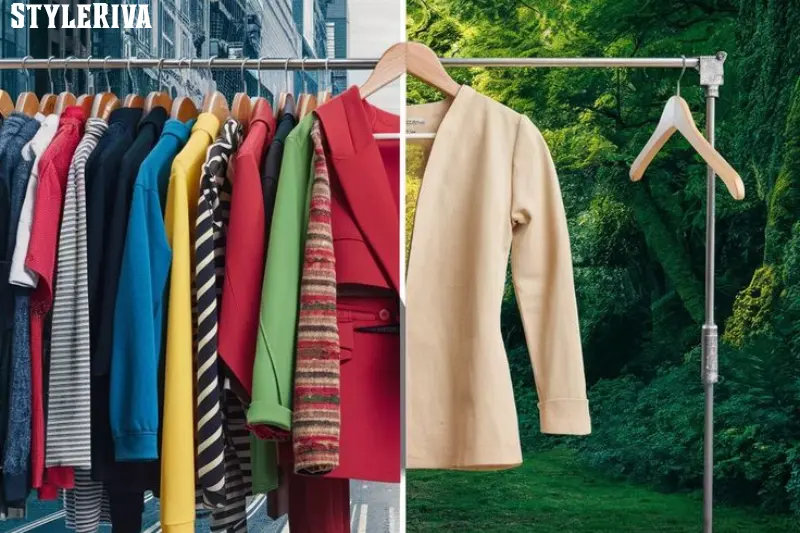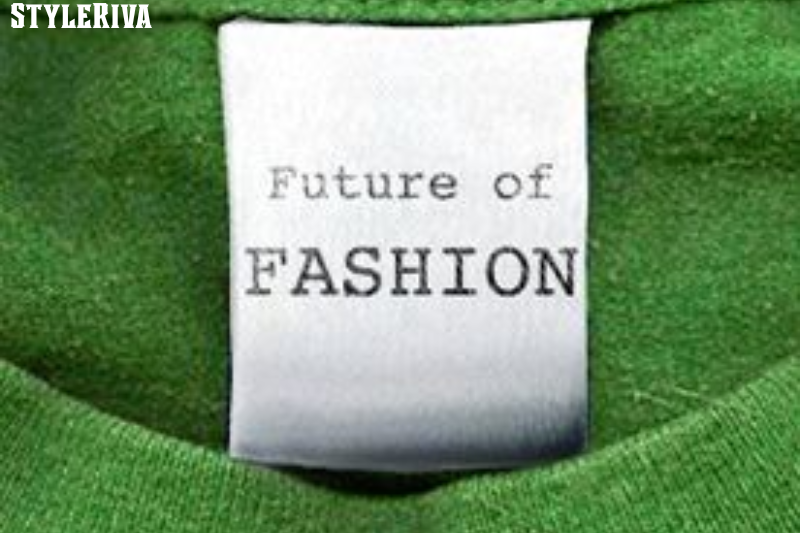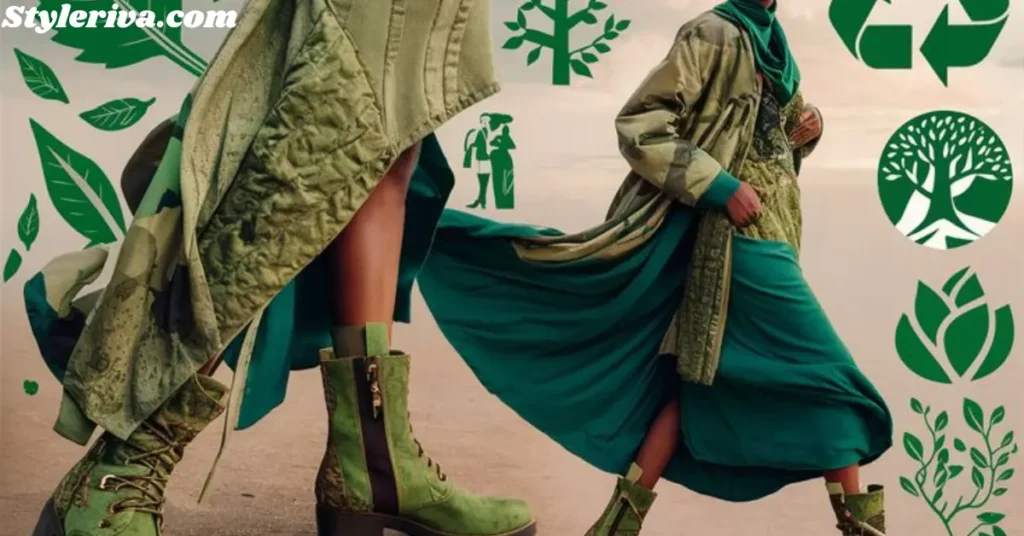Introduction
Sustainable living fashion trends represent more than a passing movement; they reflect a growing shift in how people view clothing, lifestyle, and the environment. The fashion industry is one of the world’s largest polluters, consuming vast amounts of water, generating textile waste, and producing significant carbon emissions. These impacts have highlighted the urgent need for change.
In response, a global wave of eco-conscious choices is reshaping consumer behavior. People are choosing eco-friendly clothing, ethical fashion practices, and green lifestyle habits that align with their values. This transformation goes beyond style and aesthetics. It includes reducing waste, embracing circular fashion, and supporting sustainable fabrics that minimize harm to the planet.
At its core, sustainable fashion is an essential part of sustainable living. It connects personal lifestyle decisions with environmental responsibility, encouraging clothing habits that are not only stylish but also ethical, fair, and climate-friendly. As more consumers adopt this mindset, sustainable living fashion trends are emerging as a powerful force driving lasting change across the industry.
Understanding Sustainable Fashion
Sustainable fashion is more than just a buzzword; it is a conscious approach to clothing that considers the entire lifecycle of a garment, from production to disposal. At its heart, it challenges the wasteful patterns of fast fashion and introduces a framework built on ethics, transparency, and environmental care.
Unlike fast fashion, which thrives on overproduction and disposable trends, the slow fashion movement emphasizes quality, durability, and timeless design. It encourages consumers to invest in fewer items that last longer, reducing the demand for mass production and lowering environmental costs.
A key element of sustainable fashion is circular fashion, where materials are reused, recycled, or upcycled into new clothing. Practices such as upcycled fashion and innovative design help minimize textile waste, while the use of sustainable fabrics like organic cotton and biodegradable textiles ensures reduced reliance on harmful synthetics.
This conversation often sparks the question: is sustainable fashion really sustainable? While the industry has made progress, true sustainability requires consistent commitment from both brands and consumers. Ethical sourcing, fair trade apparel, and eco-conscious brands are essential, but consumer responsibility through conscious consumerism is equally important.
Emerging Sustainable Living Fashion Trends in 2025
The fashion industry is undergoing a transformation as sustainable living fashion trends continue to grow in influence. In 2025, innovation and consumer demand are driving new approaches that align with both style and sustainability.
One of the most significant developments is the rise of biodegradable textiles and sustainable fabrics. Materials such as organic cotton, hemp, and plant-based fibers are becoming mainstream, replacing synthetic fabrics that contribute to pollution and waste. Alongside these, fair trade apparel ensures that production respects both workers and the environment.
Another defining trend is zero-waste fashion, where designers create clothing with minimal leftover material. This approach works hand in hand with the slow fashion movement, encouraging mindful consumption and reducing the cycle of overproduction. At the same time, upcycled fashion is gaining traction, transforming pre-existing materials into fresh and unique pieces.
The influence of eco-conscious brands is also shaping the industry. These companies are adopting transparent practices, reducing their carbon footprint in fashion, and connecting directly with consumers who want their purchases to reflect their values. The green fashion market trends show that customers are no longer satisfied with temporary eco-labels; they seek lasting commitments to ethical sourcing and sustainable design.
These latest sustainable fashion trends highlight a global shift where creativity, technology, and environmental responsibility come together. They prove that fashion can be both stylish and climate-friendly, making sustainability a defining theme of modern lifestyle choices.
Lifestyle Integration: Sustainable Fashion and Living

Adopting sustainable fashion is not just about what you wear; it is about embracing a broader green lifestyle. Clothing choices are a reflection of values, and when paired with eco-conscious habits, they become part of a holistic approach to sustainable living.
Choosing sustainable living clothing means prioritizing pieces made from organic, fair trade, or recycled materials. It also involves supporting eco-conscious brands that prioritize transparency and ethical sourcing. By doing so, consumers reduce their carbon footprint in fashion while contributing to fair labor practices.
A growing number of people are adopting an eco-conscious fashion lifestyle, where wardrobe decisions are linked to mindful consumption. This includes buying fewer but higher-quality items, reusing clothing, and exploring second-hand or upcycled fashion markets. These practices align closely with conscious consumerism, which emphasizes thoughtful purchases that benefit both people and the planet.
Events such as the sustainable living fair and community initiatives help raise awareness about fashion’s role in sustainability. These gatherings showcase innovative designs, promote sustainability fashion, and encourage collaboration between consumers, brands, and designers. Examples like the sustainable living fair 2022 or local efforts in places such as sustainable living Fort Collins demonstrate how communities can foster education and participation in sustainable lifestyles.
Integrating fashion with sustainable living is not about perfection. It is about progress, small choices that accumulate over time, and a commitment to aligning personal style with global responsibility.
Sustainable Fashion and Lifestyle Exhibitions
Exhibitions and fairs have become powerful platforms for promoting sustainable fashion lifestyle practices. These events bring together designers, eco-conscious brands, and consumers who share a vision of fashion that respects both people and the planet.
A sustainable fashion and lifestyle exhibition is more than a showcase of clothing; it is a space for education, innovation, and collaboration. Attendees are introduced to eco-friendly clothing, emerging technologies in biodegradable textiles, and creative examples of upcycled fashion. By experiencing these concepts firsthand, consumers are more likely to adopt sustainability fashion habits in their daily lives.
Community-driven events such as the sustainable living fair demonstrate how exhibitions spark broader conversations about ethical fashion and green lifestyle choices. The sustainable living fair 2022 highlighted the growing role of fashion industry sustainability practices, while initiatives in cities like sustainable living Fort Collins show how local communities can take part in the global shift toward eco-conscious living.
By connecting people with innovative ideas and practical solutions, these exhibitions play a vital role in shaping the future of sustainable fashion trends. They prove that awareness, when combined with creativity, can inspire lifestyle changes that extend beyond fashion and into everyday sustainable living.
You Might Also Enjoy Reading
Eco Lifestyle Accessories Online | Sustainable Products
Minimalist Lifestyle Home Ideas for Modern Living
Lifestyle Trend Reports 2025: Insights & Forecasts
Viva Fashion – Stores, Online Shopping & Reviews
Modern Lifestyle Décor Trends & Home Design Ideas 2025
Challenges and Misconceptions
While the growth of sustainable fashion is promising, it faces challenges that prevent it from being universally adopted. One of the biggest barriers is cost. Clothing made from sustainable fabrics or produced under fair labor conditions often carries a higher price tag. For many consumers, affordability remains a deciding factor, which makes fast fashion difficult to resist.
Another challenge lies in accessibility. Not all regions have equal access to eco-conscious brands or sustainable living clothing, and supply chains are still dominated by conventional practices. The lack of widespread infrastructure for recycling textiles and promoting circular fashion also slows down progress.
There are also common misconceptions, such as the debate around is sustainable fashion really sustainable. Some believe that small changes, like using organic cotton, are enough to fix the industry’s environmental impact. In reality, sustainability in fashion requires a complete system change, from design and production to distribution and consumer habits.
Transparency is another concern. While many companies highlight their fashion industry sustainability practices, not all are equally committed. Greenwashing—where brands market themselves as eco-friendly without meaningful action—creates confusion and mistrust among consumers. This makes it harder for people to distinguish genuinely eco-conscious brands from those using sustainability as a trend.
Addressing these challenges requires collaboration between brands, policymakers, and consumers. Only through combined efforts can sustainable fashion move beyond misconceptions and build a future that is ethical, transparent, and truly climate-friendly.
The Future of Fashion Sustainability

The future of sustainable fashion is being shaped by innovation, shifting consumer values, and global urgency to address climate change. As we move beyond 2025, emerging sustainable living fashion trends will focus on deeper integration of technology, transparency, and lifestyle choices.
Advances in materials science are paving the way for next-generation biodegradable textiles and lab-grown fabrics that dramatically reduce environmental harm. At the same time, digital tools are helping brands track their carbon footprint in fashion, ensuring transparency in supply chains and empowering consumers with verifiable information about the products they buy.
Eco-conscious brands are expected to play an even bigger role in this transformation. By embracing ethical sourcing, fair trade apparel, and conscious consumerism, they are redefining what it means to be fashionable. The green fashion market trends suggest that consumers will increasingly prioritize brands that align with their values, pushing the industry to innovate further.
The future also points to a stronger relationship between fashion and lifestyle. The rise of eco-conscious fashion lifestyle choices, from minimalist wardrobes to zero-waste fashion, shows that sustainability is not limited to trends but is becoming a permanent mindset. Events like the sustainable living fair and global exhibitions will continue to spread awareness, inspiring communities to connect fashion with sustainable living.
Ultimately, the path forward for fashion sustainability depends on collaboration. Designers, brands, policymakers, and consumers all play vital roles in creating a system that is truly ethical, transparent, and climate-friendly. This global shift marks a new era where fashion is not only about looking good but also about making responsible choices for the future of our planet.
Frequently Asked Questions
What are the top sustainable fashion facts?
The fashion industry contributes nearly 10 percent of global carbon emissions and is a major source of water pollution. Sustainable fashion reduces this impact by using eco-friendly fabrics, supporting ethical labor, and embracing circular fashion methods such as recycling and upcycling.
Is sustainable fashion really sustainable?
It can be, but it depends on how brands and consumers approach it. Using sustainable fabrics, ensuring fair trade production, and adopting zero-waste fashion practices are positive steps. However, true sustainability also requires reducing overconsumption and extending the life of clothing through mindful choices.
How can I live sustainably through fashion?
Start by investing in eco-friendly clothing and supporting eco-conscious brands that value ethical sourcing. Buy fewer but higher-quality pieces, explore second-hand or upcycled fashion, and choose organic cotton clothing when possible. Small lifestyle changes reduce your carbon footprint in fashion and support a more sustainable industry.
What role do exhibitions and fairs play in sustainable fashion?
Events such as the sustainable living fair or sustainable fashion and lifestyle exhibitions showcase new innovations, from biodegradable textiles to slow fashion movement designs. They help educate consumers, connect them with ethical brands, and inspire communities to adopt sustainable living practices.
What are the latest sustainable fashion trends in 2025?
Some of the most important trends include biodegradable textiles, fair trade apparel, and the rise of eco-conscious brands. There is also a growing focus on zero-waste fashion, upcycled clothing, and technology-driven transparency to reduce greenwashing and ensure genuine fashion industry sustainability practices.
Conclusion
The rise of sustainable living fashion trends shows that fashion is no longer just about appearance; it is about responsibility, ethics, and environmental impact. By embracing sustainable fashion, consumers and brands together are shaping an industry that values transparency, fair labor, and climate-friendly practices.
Integrating fashion into a green lifestyle means making mindful choices, from supporting eco-conscious brands to exploring upcycled fashion and reducing waste through the slow fashion movement. These actions may seem small, but collectively they create powerful change.
The future of fashion sustainability depends on collaboration across the supply chain and a continued commitment from consumers who demand better. By aligning style with sustainability, we not only protect the planet but also redefine what it means to live fashionably in the modern world.
Sustainable living and ethical fashion are no longer optional—they are essential for a future where style and sustainability move forward together.
You Might Also Enjoy Reading
Eco Lifestyle Accessories Online | Sustainable Products
Minimalist Lifestyle Home Ideas for Modern Living
Lifestyle Trend Reports 2025: Insights & Forecasts
Viva Fashion – Stores, Online Shopping & Reviews
Modern Lifestyle Décor Trends & Home Design Ideas 2025

